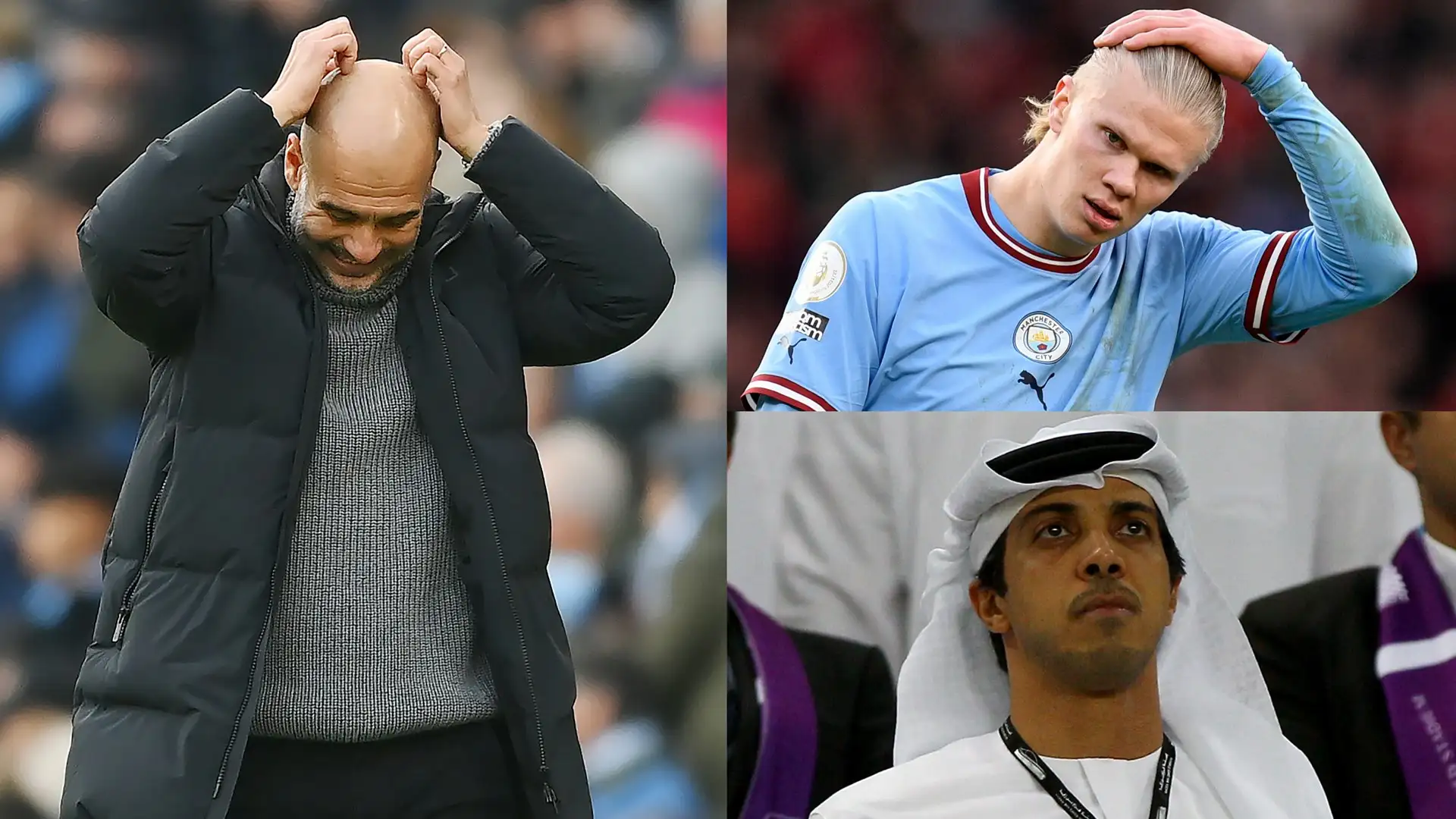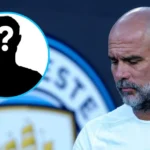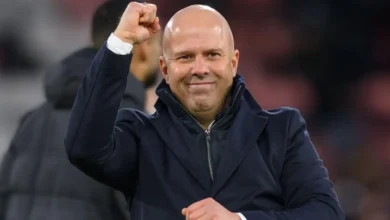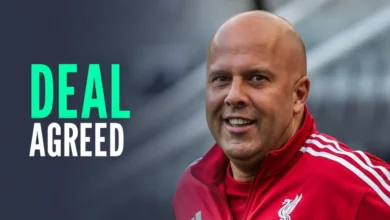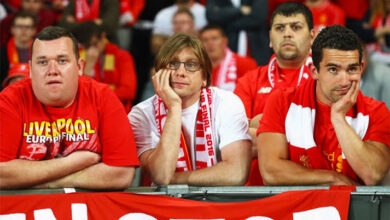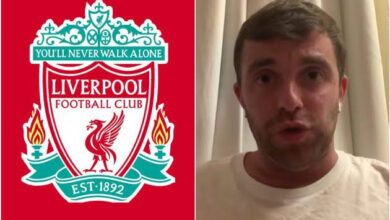Manchester City have reached an agreement to sign a highly-rated Tottenham teenager, with the youngster being labelled a ‘crucial addition’ to their squad.
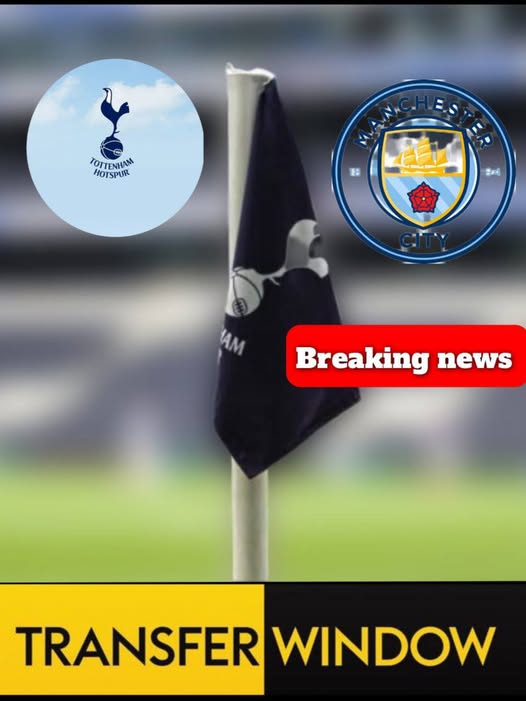
In a move that has sent ripples through the football world, Manchester City have successfully negotiated an agreement to sign one of Tottenham Hotspur’s most promising young talents, 16-year-old midfielder Dexter Oliver. This transfer represents far more than a simple youth acquisition; it embodies the ongoing battle between England’s elite clubs for the next generation of football stars and highlights the complex dynamics of modern academy football.
The agreement, which is expected to be finalized within days according to transfer specialist Fabrizio Romano, sees Oliver joining the Premier League champions’ youth setup in what City officials are describing as a ‘crucial addition’ to their already formidable academy structure. For Tottenham, this represents a significant loss of a player who many within the club viewed as having exceptional potential to make the transition from youth football to professional level.
Understanding Dexter Oliver’s Profile
Dexter Oliver’s emergence as a coveted talent in English youth football has been nothing short of remarkable. The attacking midfielder, who celebrated his 16th birthday earlier this year, has already demonstrated the kind of technical ability and football intelligence that separates promising youngsters from genuine prospects. During the previous season, Oliver made nine appearances for Tottenham’s Under-18 squad, a significant achievement for a player of his age competing against older, more physically developed opponents.
His contribution of two assists in those nine appearances tells only part of the story. Those who have watched Oliver play consistently speak of a player who possesses an innate understanding of space and timing, qualities that are increasingly rare in modern football. His ability to find pockets of space between the lines, combined with his vision to pick out teammates in advanced positions, has drawn comparisons to some of the Premier League’s most creative midfielders.
The teenager’s technical proficiency extends beyond his passing range. Oliver has demonstrated a remarkable composure on the ball that belies his age, showing an ability to receive possession under pressure and make quick, incisive decisions. His dribbling skills, while not yet fully developed, show promise of becoming a significant weapon in his arsenal as he continues to mature physically and tactically.
The Battle for Oliver’s Signature
The competition for Oliver’s services had been intense throughout the early months of 2025, with both Manchester United and Manchester City identifying him as a priority target for their respective youth systems. This dual interest from two of England’s most successful clubs underscores the exceptional regard in which Oliver is held within football circles.
Manchester United’s interest was particularly significant given their recent renewed focus on youth development under their current management structure. The Red Devils have been actively seeking to rebuild their academy reputation and return to the days when young players could realistically expect to progress through the ranks to first-team football. Their pursuit of Oliver was seen as part of this broader strategy to identify and acquire the best young talent available.
However, it was Manchester City who ultimately prevailed in the race for Oliver’s signature. The Citizens’ success in securing the teenager’s services can be attributed to several factors that extend beyond mere financial considerations. City’s academy has developed a reputation as one of the most sophisticated youth development systems in world football, with state-of-the-art facilities and a coaching philosophy that emphasizes technical development and tactical understanding.
The club’s track record in recent years of successfully transitioning academy players to first-team football has also played a crucial role in their appeal to young players and their families. Players like Phil Foden, who emerged from City’s youth system to become a key figure in Pep Guardiola’s squad, serve as powerful examples of the pathway that exists for exceptional talents.
Manchester City’s Academy Philosophy
Manchester City’s approach to youth development has been revolutionary in its scope and ambition. The club has invested hundreds of millions of pounds in creating what many consider to be the finest youth development facility in world football. The City Football Academy, which opened in 2014, represents far more than just training pitches and buildings; it embodies a comprehensive philosophy toward nurturing young talent.
The facility spans 80 acres and includes 16 pitches, a 7,000-seat stadium for academy matches, and cutting-edge sports science facilities. However, the physical infrastructure, impressive as it is, represents only one element of City’s youth development strategy. The club has also invested heavily in recruiting some of the world’s best youth coaches and implementing a coaching methodology that mirrors the tactical approach used by the first team.
This integration between youth and senior team philosophies is crucial to understanding why City have been so successful in attracting top young talent. Players entering the academy system are immediately immersed in the same tactical concepts and playing style that characterize the first team. This creates a seamless transition pathway that allows talented youngsters to adapt more quickly when opportunities arise at senior level.
The club’s commitment to youth development has also been demonstrated through their willingness to provide first-team opportunities to academy graduates. Under Pep Guardiola’s guidance, players like Phil Foden, Cole Palmer (before his move to Chelsea), and Rico Lewis have been given significant roles in the first team, proving that the pathway from academy to senior football is not merely theoretical but genuinely accessible to players who demonstrate the required ability and application.
Tottenham’s Academy Legacy and Current Challenges
Tottenham Hotspur’s relationship with youth development is deeply ingrained in the club’s identity and history. The North London club has long prided itself on its ability to identify, develop, and successfully integrate young players into the first team. This tradition stretches back decades and includes legendary figures like Glenn Hoddle, who emerged from the club’s youth system to become one of English football’s most technically gifted players.
In more recent years, Tottenham’s academy has continued to produce players who have gone on to achieve success at the highest level. Harry Kane, perhaps the most successful product of the club’s youth system in recent memory, serves as the archetypal example of how the pathway from academy to first team can lead to extraordinary achievements. Kane’s journey from young prospect to England captain and Bayern Munich striker demonstrates the potential that exists within Tottenham’s development system.
The club’s academy has also produced other notable talents in recent years, including players like Ryan Sessegnon, Kyle Walker-Peters, and Japhet Tanganga, all of whom have gone on to establish themselves as professional footballers. This consistent production of talent has helped maintain Tottenham’s reputation as a club that genuinely believes in giving young players opportunities to develop and succeed.
However, the loss of Dexter Oliver highlights some of the challenges currently facing Tottenham’s youth development program. Despite the club’s proud history of developing young talent, there are concerns about whether the current structure provides sufficient assurance to promising youngsters that they will receive the opportunities necessary to fulfill their potential.
The appointment of Johan Lange as technical director represented a significant step toward addressing these concerns. Lange, who arrived at Tottenham with a reputation for identifying and developing young talent, was tasked with overseeing a comprehensive review of the club’s youth development operations. His mandate included not only improving the quality of recruitment but also ensuring that the pathway from academy to first team remained clear and accessible.
The Impact of New Leadership
The arrival of Thomas Frank as Tottenham’s new head coach, replacing Ange Postecoglou, has added another layer of complexity to the club’s youth development strategy. Frank’s reputation, built during his successful tenure at Brentford, includes a strong commitment to developing young players and integrating them into first-team environments.
At Brentford, Frank demonstrated a willingness to trust young players with significant responsibilities, often giving academy graduates opportunities in competitive fixtures when other coaches might have preferred more experienced options. This approach not only helped develop individual players but also created a culture within the club that valued youth development and provided clear examples of the opportunities available to talented youngsters.
Frank’s coaching philosophy emphasizes technical development, tactical understanding, and mental resilience – qualities that align closely with the attributes needed for successful youth development. His experience in working with young players at various stages of their development provides him with insights into the specific challenges and opportunities that characterize the transition from academy to professional football.
However, Frank’s appointment came too late to influence Dexter Oliver’s decision-making process. By the time Frank was confirmed as Tottenham’s new head coach, Oliver’s move to Manchester City was already well advanced. This timing issue highlights one of the challenges facing clubs during periods of transition – the difficulty of maintaining continuity in youth development strategies when senior leadership positions are changing.
The loss of Oliver also occurred during a period when Tottenham were still adapting to the changes implemented by Postecoglou during his time in charge. Postecoglou had made youth development a priority, consistently emphasizing the importance of providing opportunities for young players to develop within the first-team environment. His approach had begun to show results, with several academy graduates receiving first-team opportunities and making positive impressions.
The Broader Context of Academy Football
The battle for Dexter Oliver’s signature reflects broader trends in modern football that extend far beyond the specific circumstances of his transfer. The increasing sophistication of youth development programs across Europe’s elite clubs has created an environment where the most promising young talents are identified and pursued from increasingly early ages.
This trend has been accelerated by changes in football’s regulatory environment, particularly UEFA’s Financial Fair Play regulations, which have encouraged clubs to invest more heavily in youth development as a sustainable means of building competitive squads. The potential for academy graduates to provide both sporting success and financial returns has made youth development a strategic priority for ambitious clubs.
The globalization of football has also played a role in increasing competition for young talent. Clubs are no longer limited to scouting within their immediate geographic regions but instead maintain extensive networks that span continents. This has created opportunities for young players to move between clubs and countries in pursuit of the best development opportunities, but it has also increased the pressure on clubs to provide compelling reasons for talented youngsters to remain within their systems.
The financial implications of losing promising young players have also become more significant. While the immediate financial impact of Oliver’s move to Manchester City may be relatively modest, the long-term opportunity cost could be substantial if he develops into a player capable of commanding significant transfer fees or making meaningful contributions to first-team success.
Technical Analysis of Oliver’s Playing Style
Those who have observed Dexter Oliver’s development closely describe a player whose technical attributes are already remarkably advanced for his age. His passing range includes both short, incisive passes that can unlock defensive lines and longer, more expansive passes that can switch play or find teammates in advanced positions. This versatility in his passing game suggests a player who understands the tactical requirements of modern midfield play.
Oliver’s ball-carrying ability represents another significant strength in his developing skill set. He demonstrates confidence in taking responsibility for progressing play through his dribbling, showing a willingness to accept possession in tight spaces and use his technical ability to create opportunities for teammates. This comfort on the ball, combined with his passing range, suggests a player who could adapt to various tactical systems and playing styles.
His tactical understanding, perhaps the most impressive aspect of his game at such a young age, indicates a player who thinks about football in sophisticated terms. Oliver’s positioning, both in and out of possession, shows an awareness of space and timing that typically develops over years of coaching and match experience. His ability to find effective positions between defensive lines and his understanding of when to press and when to hold his position defensively suggest a player who could adapt quickly to the tactical demands of senior football.
The physical aspects of Oliver’s game, while still developing, show promise of supporting his technical and tactical strengths. His pace, while not exceptional, is sufficient to create separation from opponents and exploit space in behind defensive lines. His stamina and work rate demonstrate the kind of commitment that coaches value in young players, particularly those transitioning from youth to senior football.
The Role of Family and Representation
The decision-making process surrounding Oliver’s transfer inevitably involved careful consideration by his family and representatives. For a 16-year-old player, the choice of club represents far more than just immediate footballing opportunities; it encompasses educational considerations, personal development, and long-term career planning.
Manchester City’s ability to present a compelling vision for Oliver’s development likely played a crucial role in securing his signature. The club’s track record of supporting young players through the various challenges of professional football, combined with their commitment to providing educational opportunities alongside football training, would have been significant factors in the decision-making process.
The role of agents and advisors in youth football transfers has become increasingly sophisticated, with families often seeking guidance from professionals who understand the complexities of youth development and can provide objective assessments of different opportunities. The quality of advice available to young players and their families can significantly influence transfer decisions and, ultimately, career trajectories.
Implications for Tottenham’s Future Strategy
The loss of Dexter Oliver represents more than just the departure of a promising individual player; it highlights broader strategic challenges that Tottenham must address to maintain their competitive position in youth development. The club’s ability to attract and retain top young talent will be crucial to their long-term success, particularly given the financial constraints that may limit their ability to compete in the transfer market for established players.
Johan Lange’s role as technical director becomes even more critical in this context. His responsibility for overseeing the club’s youth development strategy must include not only improving the quality of facilities and coaching but also ensuring that Tottenham can present a compelling vision for young players contemplating their futures. This requires clear communication about the pathway from academy to first team, supported by concrete examples of recent successes.
The club’s recent history provides some encouraging examples of young players successfully making the transition to first-team football. Mikey Moore and Will Lankshear, both of whom made first-team appearances during the previous season, demonstrate that opportunities exist for players who demonstrate the required ability and application. Their experiences can serve as powerful examples for other young players considering their options.
However, Tottenham must also acknowledge the reality that competition for the best young talent has intensified significantly. Clubs like Manchester City, with their vast resources and sophisticated development programs, represent formidable competition for any young player’s signature. Tottenham’s response must focus on their unique strengths – their history of developing young players, their commitment to providing first-team opportunities, and their ability to offer a clear pathway to senior football.
The Financial Dynamics of Youth Transfers
While the immediate financial implications of Oliver’s transfer may be relatively modest, the long-term financial dynamics of youth player movements are becoming increasingly significant. The potential for academy graduates to develop into players worth tens of millions of pounds means that losing promising youngsters can have substantial opportunity costs over time.
Manchester City’s investment in Oliver represents a calculated risk based on their assessment of his potential to develop into a player capable of contributing to first-team success. The club’s sophisticated scouting and analysis systems provide them with detailed information about young players’ development trajectories, allowing them to make informed decisions about which prospects justify significant investment.
For Tottenham, the financial implications extend beyond the immediate loss of Oliver’s potential future value. The club’s reputation in youth development markets could be affected by high-profile departures, potentially making it more difficult to attract other promising young players in the future. This reputational impact could have cascading effects on the club’s ability to compete for the best young talent.
Looking Forward: The Next Generation
Despite the disappointment of losing Dexter Oliver, Tottenham’s youth development program continues to produce promising players who could make significant contributions to the club’s future success. The academy currently houses several players who have attracted attention from coaches and scouts, including Jamie Donley, Alfie Devine, George Abbott, Josh Keeley, Ashley Phillips, and Luka Vuskovic.
Each of these players represents a different aspect of the club’s youth development success. Donley’s technical ability and creativity in attacking positions, Devine’s versatility and tactical understanding, Abbott’s pace and direct running ability, Keeley’s shot-stopping ability and distribution, Phillips’ defensive capabilities and leadership qualities, and Vuskovic’s physical presence and aerial ability all suggest a academy system that continues to produce diverse talents.
The challenge for Thomas Frank and his coaching staff will be to provide these players with the opportunities and support necessary to fulfill their potential while maintaining the competitive standards required at senior level. This balancing act requires careful planning, clear communication, and a commitment to long-term development rather than short-term results.
Conclusion: The Evolving Landscape of Youth Development
The transfer of Dexter Oliver from Tottenham to Manchester City represents a microcosm of the broader changes occurring in football’s youth development landscape. The increasing sophistication of academy systems, the growing financial implications of youth transfers, and the globalization of talent identification have created an environment where the most promising young players are pursued by multiple clubs from increasingly early ages.
For Manchester City, the acquisition of Oliver represents another step in their ongoing effort to build the world’s most comprehensive youth development program. The club’s commitment to investing in young talent, combined with their track record of successfully transitioning academy graduates to first-team football, makes them an attractive destination for ambitious young players and their families.
For Tottenham, Oliver’s departure serves as a reminder of the challenges facing all clubs in the modern youth development environment. The club’s proud history of developing young talent provides a strong foundation, but maintaining competitive advantage requires continuous innovation, investment, and adaptation to changing circumstances.
The broader implications of this transfer extend beyond the immediate parties involved. It highlights the increasing importance of youth development in modern football strategy and the need for clubs to provide clear, compelling pathways for young players to achieve their ambitions. As competition for the best young talent continues to intensify, the clubs that succeed will be those that can combine sophisticated development programs with genuine opportunities for progression to senior football.
Ultimately, the success of Oliver’s move to Manchester City will be measured not just in terms of his individual development but also in how it influences the broader landscape of youth football. If he successfully progresses through City’s system and eventually contributes to first-team success, it will reinforce the club’s reputation as a destination for ambitious young players. If he struggles to make the expected progress, it may serve as a cautionary tale about the challenges facing young players who move between clubs during critical developmental periods.
The story of Dexter Oliver’s transfer from Tottenham to Manchester City is still being written, but it has already provided valuable insights into the current state of youth development in English football and the challenges facing clubs as they compete for the next generation of football stars.

